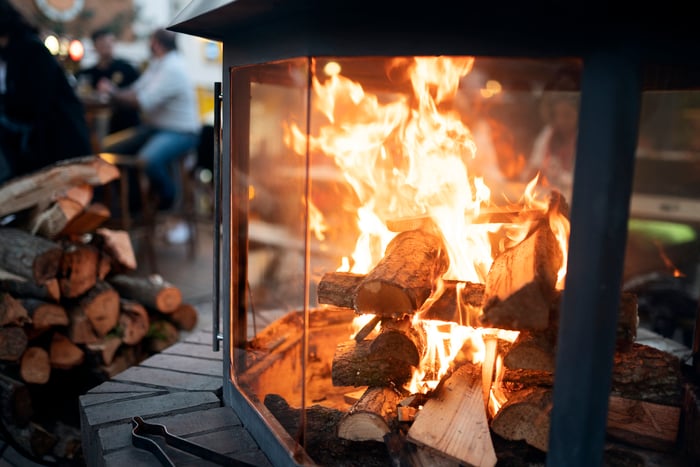
During the colder months, there’s nothing quite like enjoying a fire indoors.
Whether it’s setting a relaxing ambiance or taking the edge off of heating bills, making use of a fireplace or stove can be just the ticket to forgetting about the frigid temperatures.
A fireplace or stove’s glass plays a big role in how well your customer is able to actually enjoy their hearth and heat. Not just any glass will do.
Selecting the right glass for your indoor glass fireplace project helps to make the most of an indoor fire, but not worry about a fire spreading where it shouldn’t.
Indoor Glass Fireplace Options
There are two types of glass used in fireplaces and stoves to provide a barrier between the flames and the rest of the room: ceramic glass vs. tempered glass.
While both enhance safety and offer unobstructed viewing of a fire, there are stark differences -- and safety concerns -- between the two.
1. Ceramic Glass
Ceramic glass isn’t actually glass -- it’s a clear ceramic. By appearances, ceramic glass and traditional glass are basically the same -- they’re transparent and come in all shapes and sizes.
Unlike standard glass, ceramic glass is made to not only withstand temperatures in excess of 1,000℉ but sudden temperature changes as well. Ceramic glass also allows for heat to pass through it.
2. Tempered Glass
Tempered glass is among the strongest glasses on the market. Through processing, it’s 4-5x stronger than standard annealed glass.
Because of its enhanced strength, however, tempered glass does not allow as much heat to pass through it. It also only withstands temperatures of up to 470℉ -- anything hotter, and it’s likely to break.
Replacement Glass for Fireplace Stoves and Inserts
Because of insurance costs and a shift toward open-concept floor plans, many homeowners are ditching the traditional fireplace and accompanying chimney. Those who still want the benefits of a traditional fireplace are instead opting for wood-burning stoves, installing them as either a partial or full insert into a traditional hearth.
After years of use, the glass on fireplace stove doors dull and even blackens from exposure to heat and soot. It’s nearly impossible to restore the glass to like-new condition.
Ceramic glass is your best -- and safest -- bet for a replacement option. In fact, tempered glass is not recommended for stoves.
Whether burning wood, coal, or pellets, stoves trap heat and get extremely hot for long periods of time. Think of a roaring bonfire piled high with plenty of wood. The next morning, chances are your bonfire is now a pile of smoldering coals.
Ceramic glass meets the demands of a roaring fire inside a stove or partial insert no matter how long it burns. Unlike tempered glass, most of the heat produced by a fire transfers through the glass into the surrounding space.
Tempered Glass Fireplace Doors
For the purposes of containing a fire, tempered glass is only a safe option for open indoor fireplace glass doors. Even then, those tending to the fire must be careful about how big the blaze gets.
Tempered glass fireplace doors are meant for more modern open fireplaces that use gas logs or a decorative gas insert. Because both rely on using a gas -- typically natural gas -- as the combustible, homeowners have control over how big their fire gets and how much heat it throws off.
But remember -- tempered glass does limit heat transference, so your customer won’t be able to reap the full benefits of their fire’s heat.
Tempered glass is also a cheaper alternative to ceramic glass fireplace doors.
Indoor Glass Fireplace: An Investment to Enjoy For Years to Come
An indoor glass fireplace allows your customers to truly enjoy a fire in their home-- whether it’s to relax or provide relief from high heating bills -- without having to worry about it getting outside their fireplace.
With the right glass type for their stove doors, your customers will be able to enjoy both hearth and heat for years to come.
EuroKera Pyroceram fireplace glass doors help you make the most of your hearth.
(Editor's note: This blog was originally published in December 2020 and was recently updated.)


